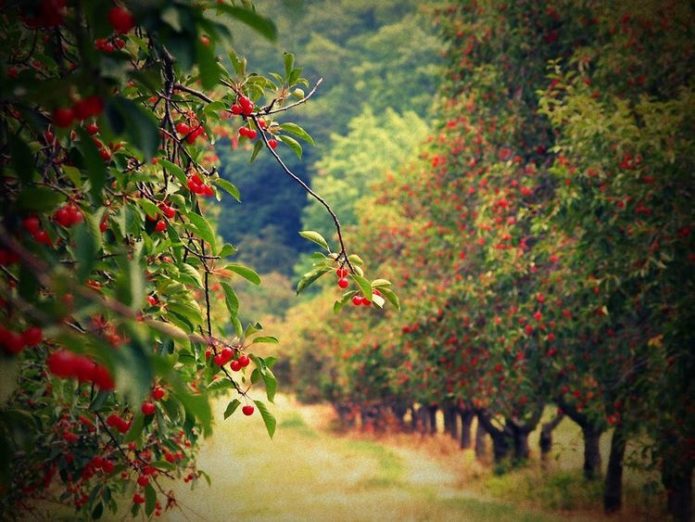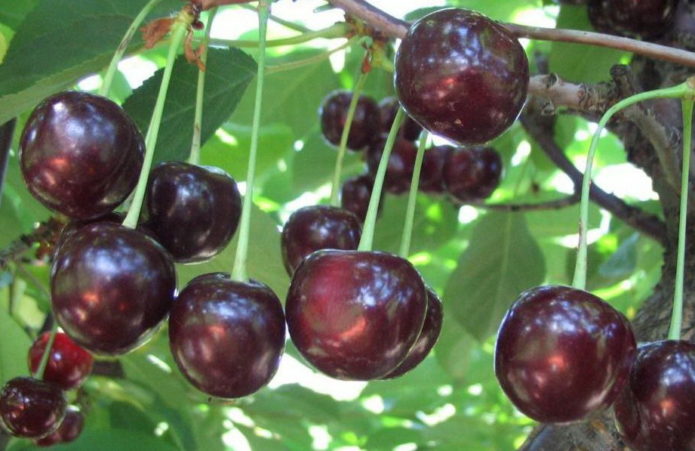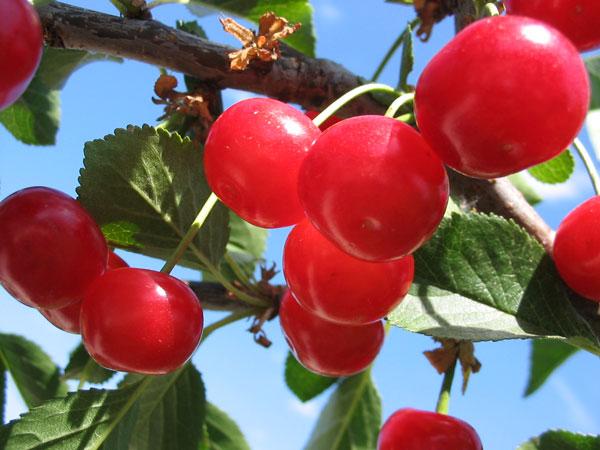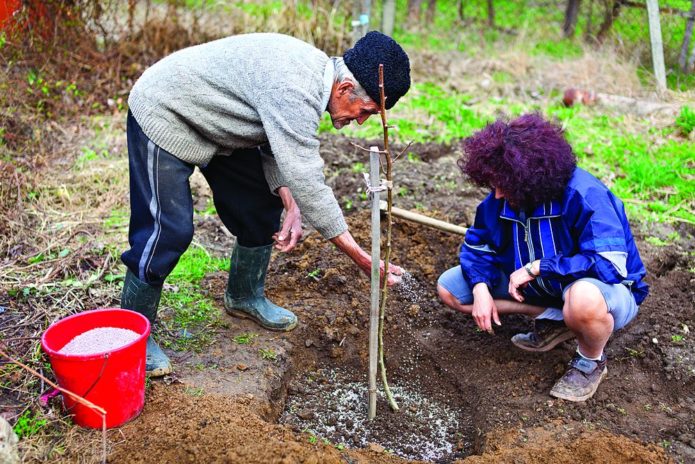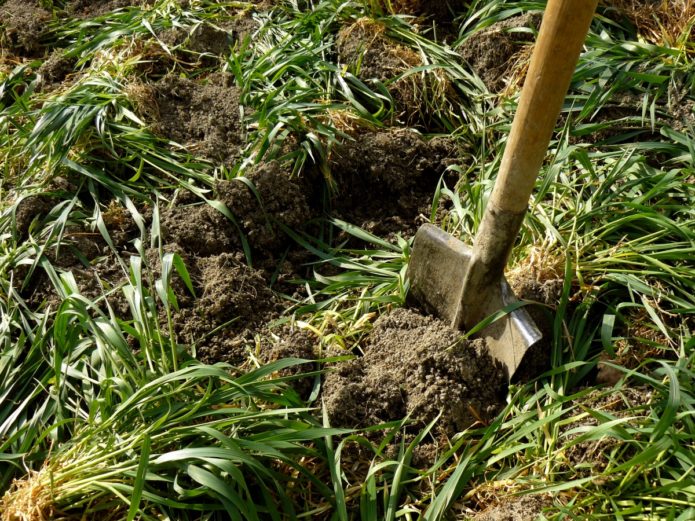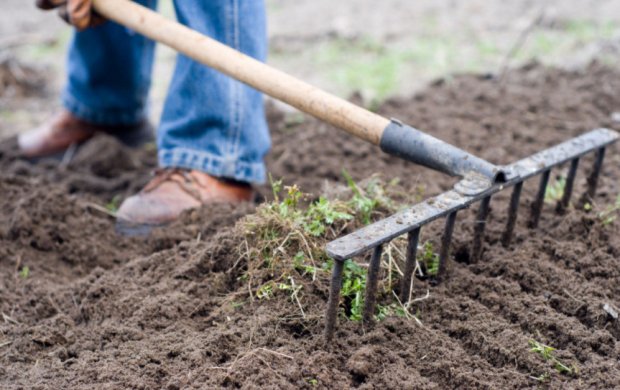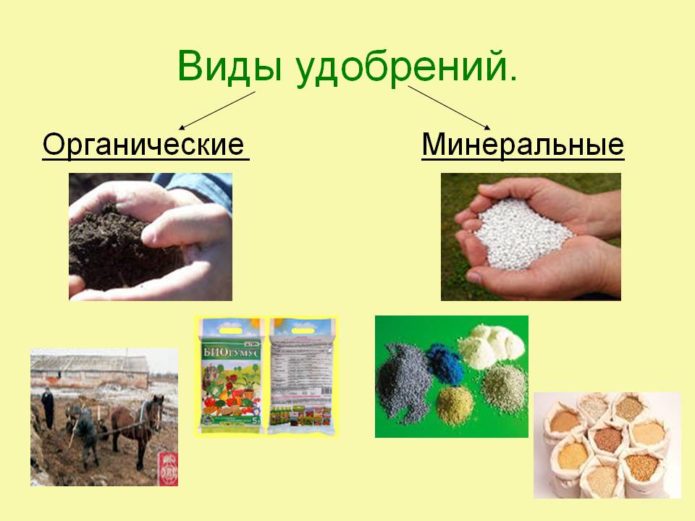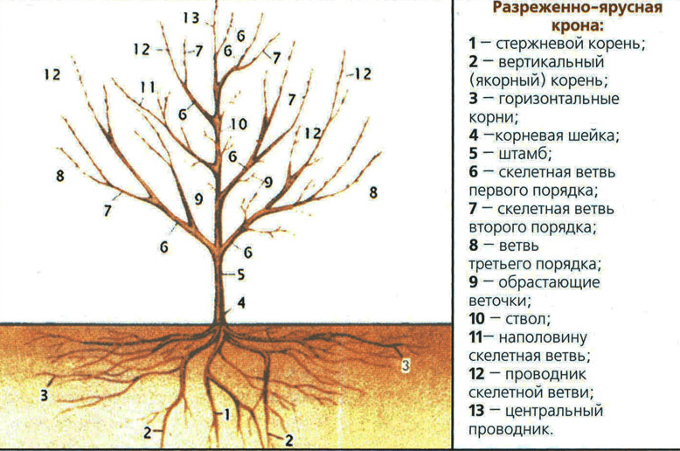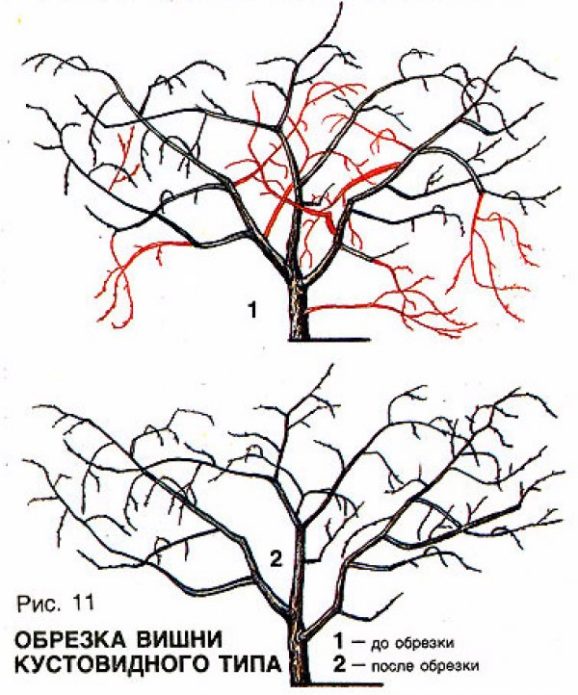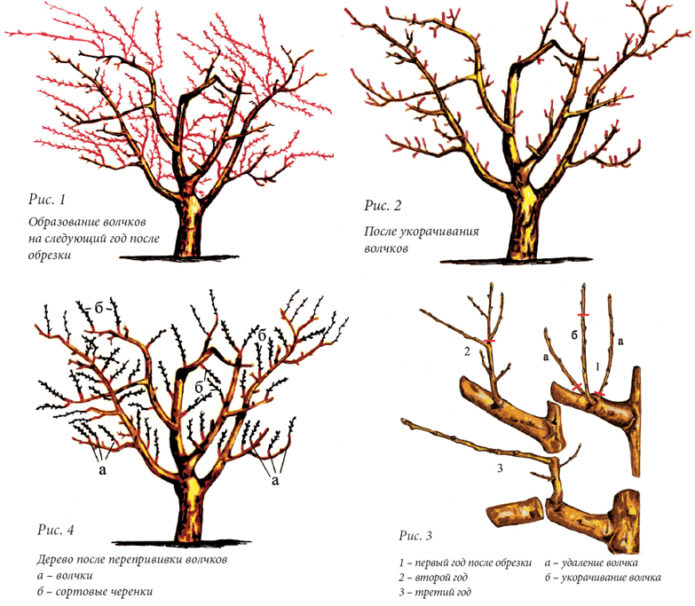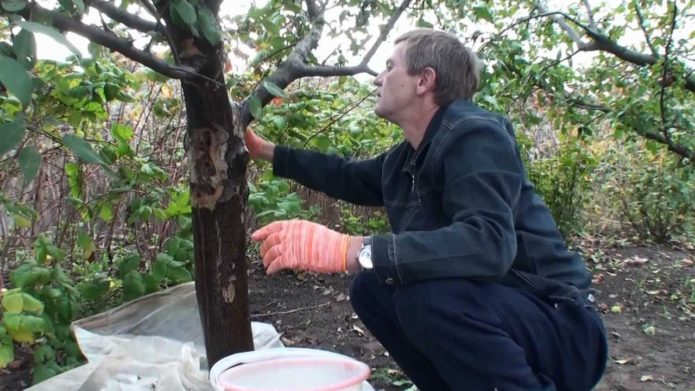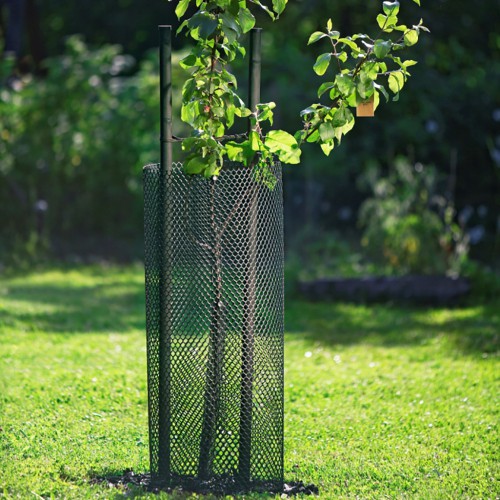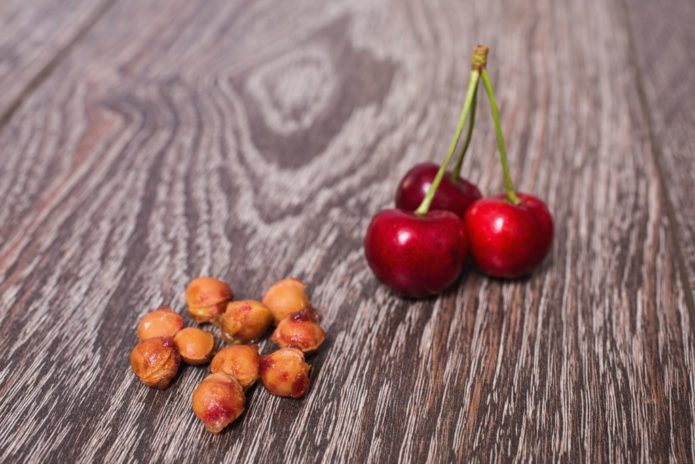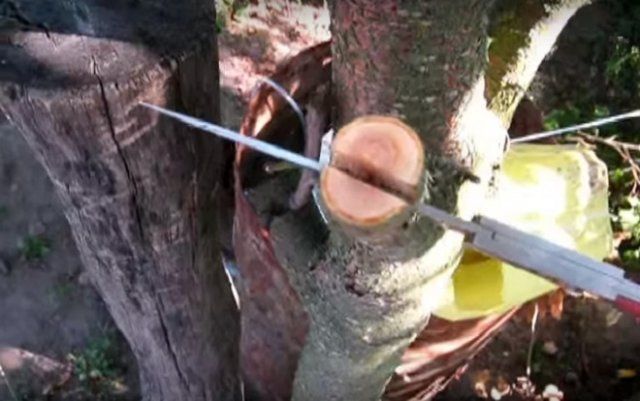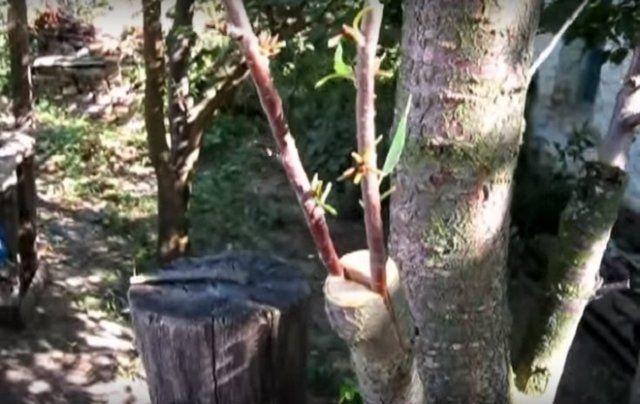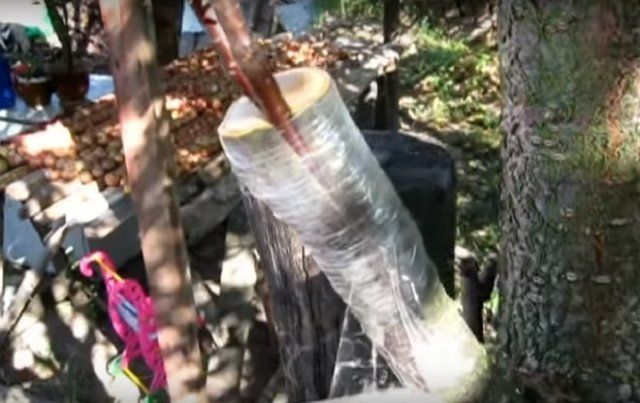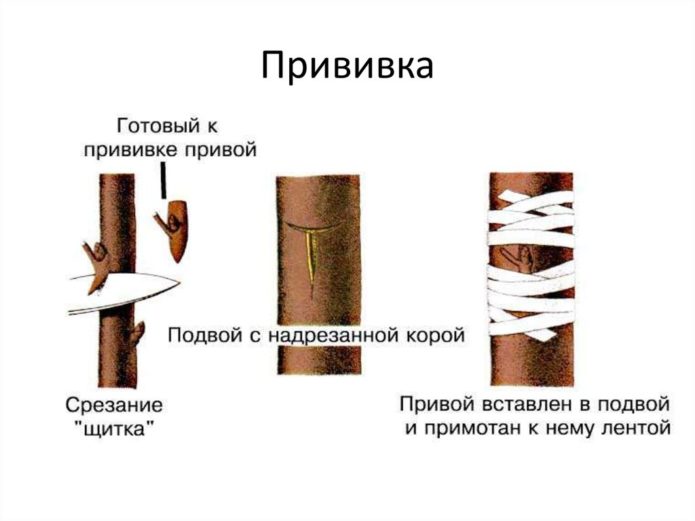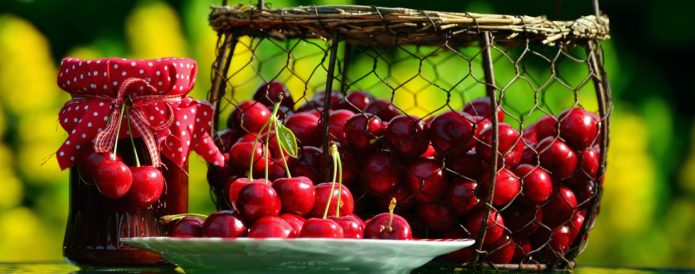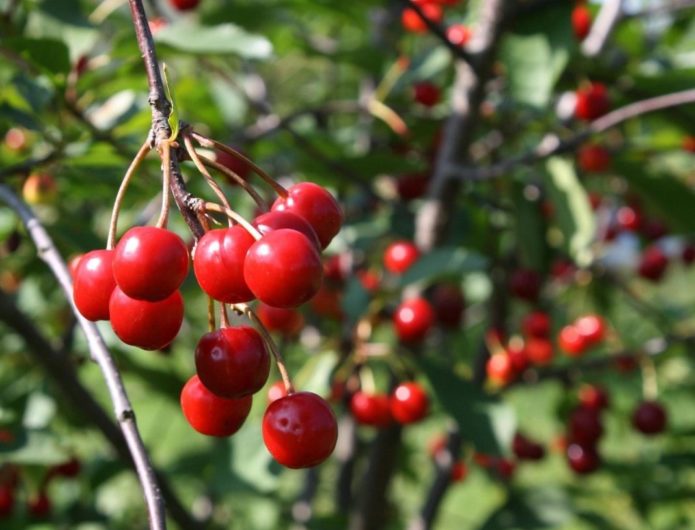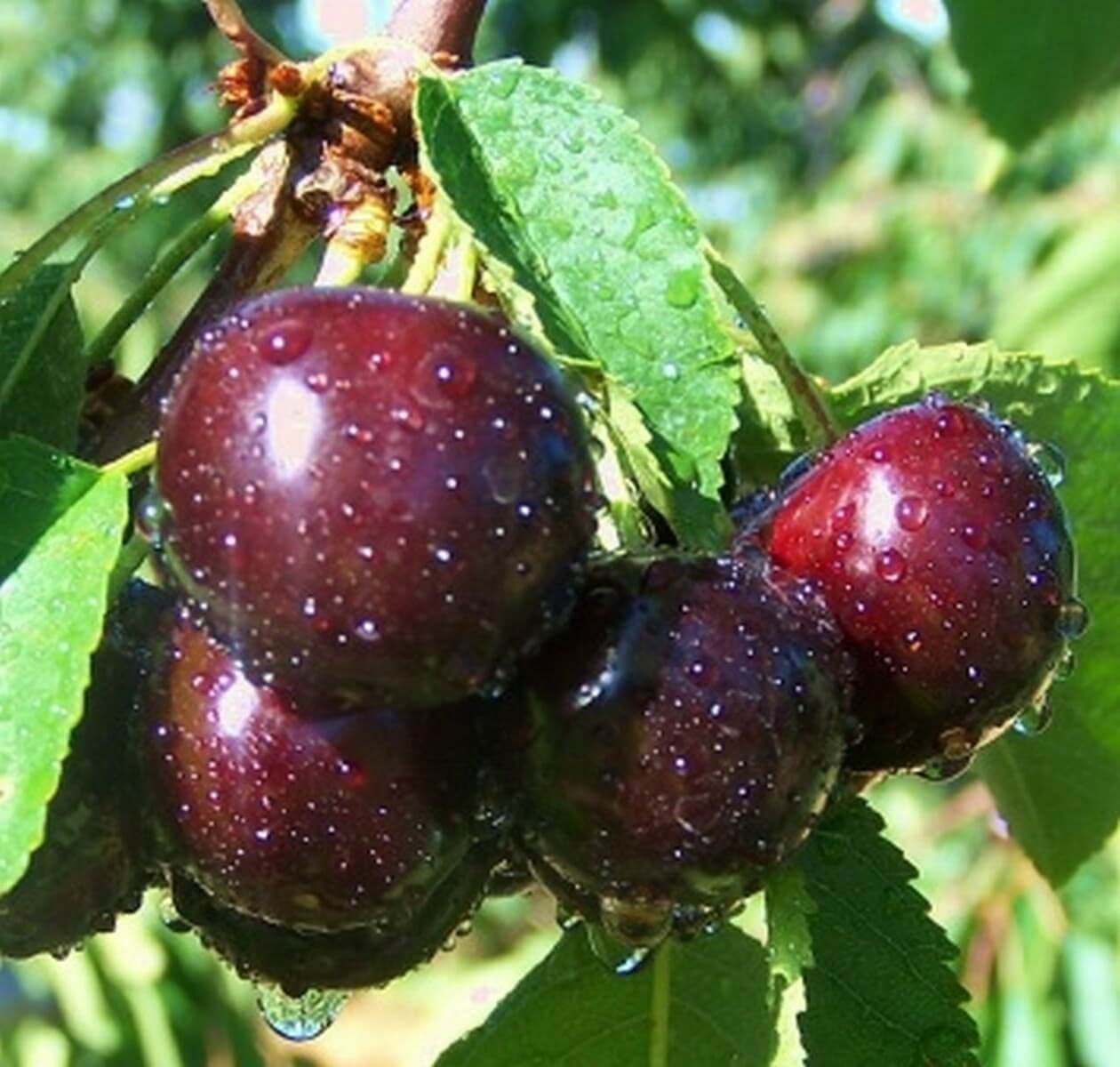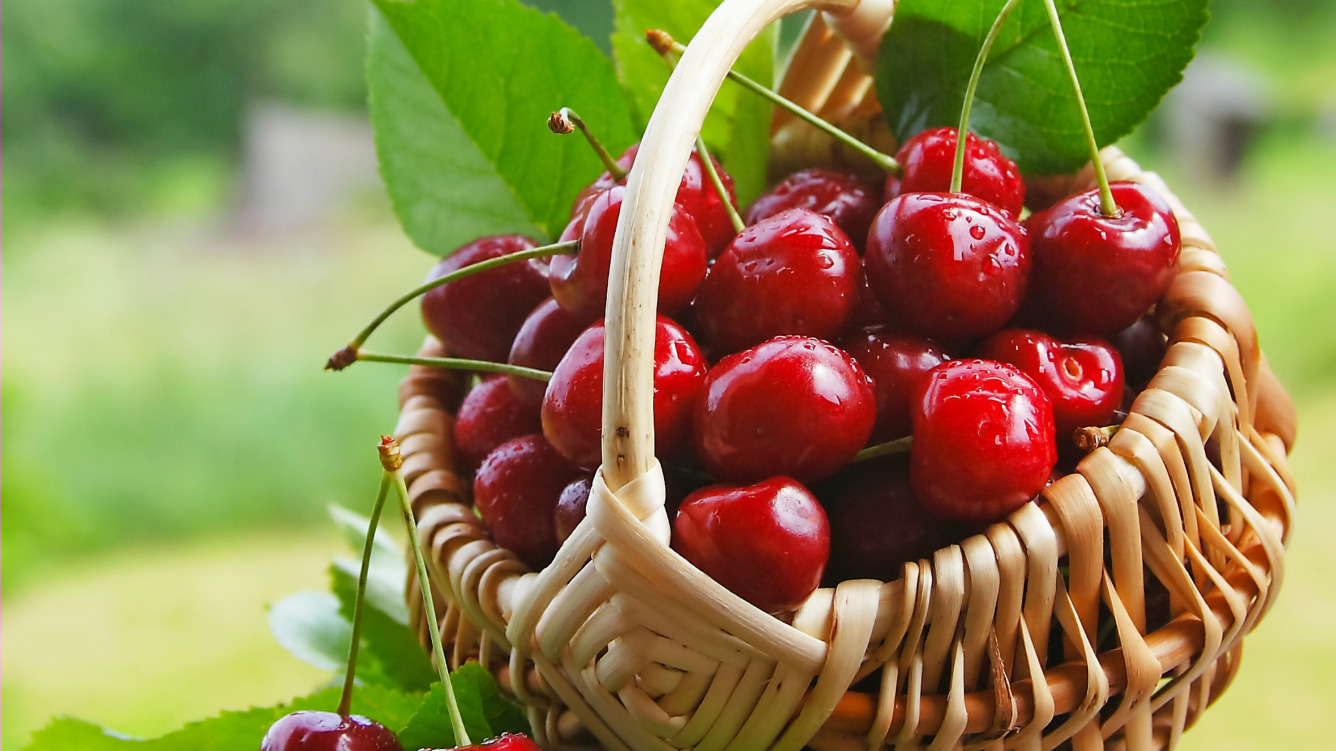Cherries are widely distributed almost all over the world. Many countries are engaged in the cultivation and processing of fruits. But unfortunately, a decline in the popularity of this culture is outlined. To grow this amazing tree, you need to know all the subtleties and secrets of its agricultural technology. And believe me, growing cherries is very simple.
Content
Growing cherries
The beautiful appearance has always made the cherry stand out from the fruit trees. And it was cherry that was the most beloved stone fruit crop in Russia and Ukraine in the century before last and last. And it's not just the beauty of a flowering tree, cherry fruits are a real storehouse of nutrients. By the way, the leaves were also actively used in folk medicine. Who among us doesn't like cherry jam? But in our years this culture began to be considered capricious and unproductive. Seedlings often die, and a lush flowering turns into a poor harvest. Changes in climatic conditions, improper agricultural practices and fungal diseases led to the fact that this culture began to gradually yield its once leading position.
Cherry is characterized by a rapid growth of the root system, which helps the tree to firmly anchor even on unstable soils - clay quicksand and cliffs. The wide crown allows the crop to act as windbreaks for the field. The beautiful appearance of tree-like and bush-like forms makes the cherry suitable for use in landscape design, for example, in the style of "Russian estate".
If you decide to revive the long tradition of your ancestors and plant cherries in your garden, you need to know a few subtleties that will help not only grow a healthy tree, but also collect good harvests from it.
- Cherries are divided into 2 groups, which differ in the color of the fruit pulp and juice, as well as in the sugar content. Therefore, before planting cherries, decide on the variety.
- Moreli, or griots - berries with a dark red color of the skin, pulp and juice. Stains from such a berry are very difficult to remove. In addition, the morel fruits taste sweet-sour or sour, since the percentage of sugar in them is low. Typical representatives of this group are Griot Ostgeimsky, Lyubskaya, Vladimirskaya, Shubinka.
- Amoreli is a cherry with light fruits. Their colors range from pink to light red. The flesh may be light yellow. The juice is clear or pink. Amoreli are not the most common varieties, although they have a sweet pulp taste.
- Choose for planting only zoned varieties that have already shown their capabilities in your region. A southern variety brought to a cold region will not show anything good in terms of growth and productivity. And the taste will differ from the declared one.
- You should also know that cherries can be self-fertile (Amorel, Molodezhnaya, Generous, Lyubskaya), partly self-fertile (Novella, Dessertnaya Morozovoy, Turgenevka) and self-fertile (Chernokorka, Zhukovskaya, Morozovka). Therefore, you need to have at least 2 - 3 trees in the garden for cross-pollination so that the yield does not fail. For many well-known varieties, the most suitable pollinator is Vladimirskaya and Fatezh cherry.
- Another interesting fact is that tree-like cherry varieties can live up to 30 years, but bushy ones - half this period.
Cherry planting
The choice of a seedling for planting is a crucial moment, because the growth of a tree directly depends on the quality of the planting material. The seedlings must meet the following standards:
- have a developed root system with four main roots at least 20 cm long;
- the stem is even, without visible damage. The diameter of the trunk of a tree variety is 1 - 1.2 cm, of a felt or bush cherry - 0.6 - 0.8 cm;
- the preferred age of the seedlings is 1 - 2 years.
Planting times vary by region. In the areas of northern fruit growing in Russia, it is best to plant in spring - in late April or early May. In central Russia and in the south, it is preferable autumn procedure... In spring, in hot regions, as a rule, it is dry and most of the seedlings that have not received proper moisture die.
Choose places for cherries that are as illuminated as possible. South or southwest directions are what you need. Beware of planting seedlings in hollows - cold air and moisture accumulate there. The groundwater level should not lie closer than 1.5 - 2 m to the soil surface.
Cherry loves secluded places. In winter, even at -10 ° C, cherries can dry out if they are in the path of strong prevailing winds.
Soil
A good cherry harvest directly depends on the quality of the soil in which it is planted. And although the culture cannot be called fastidious, when choosing a place to plant cherries, pay attention to the following indicators:
- looseness, good air and moisture permeability of the soil. In southern regions where drought prevails, light loams are preferred. In areas where precipitation falls in sufficient quantity or in excess, sandy loam will do;
- the culture does not tolerate waterlogging of the soil. If cherry roots stay in water for a long time, they may die. Create artificial hills for planting in such places;
- acidity level is another important factor when choosing a site. Cherries do not like acidic soils. Therefore, dolomite flour should be regularly added to the trunk circle. A year before planting, in order to bring the acidity to the desired pH of 6 - 7.5, add 500 - 800 g of this deoxidizer for each m² under digging.
There is an opinion that cherries are indifferent to soil fertility and can bear fruit even on low-humus soils. This is partly true. However, increasing fertility will improve the quality of the crop, therefore, in the preparatory stage before planting a seedling, sow the site with siderates (white mustard, vetch, phacelia or clover). This will help give the soil more looseness and porosity, increase the population of living soil inhabitants, which will accelerate the processing of organic matter.
Care
After planting, you need to carry out a set of measures in order to first speed up the process of survival of the seedling in a new place, and then help the tree to reach its full potential.And since a young plant and an adult need different agricultural techniques, they are cared for in different ways. It should be noted right away that growing cherries will not be difficult even for a novice gardener, you just need to carry out the necessary procedures on time.
Watering
Cherry is considered to be a fairly drought-resistant crop. For an adult plant, 2 mandatory waterings per growing season are enough:
- immediately after flowering;
- during the period of increasing ovary.
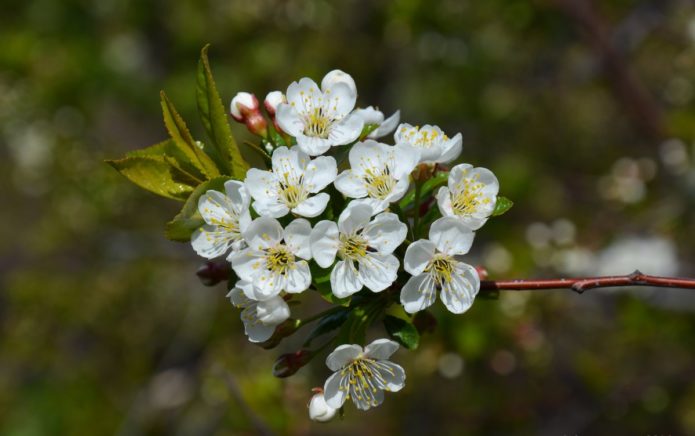
After the cherry blossoms, do not forget to water the tree to prevent the ovary from falling off later.
The watering rate for fruit-bearing cherries is from 30 to 60 liters per tree. The soil should be saturated to a depth of 45 cm.
The seedling requires more frequent watering. In the first 2 years after planting, the soil in the trunk circle is moistened at least 5 times during the growing season. For one seedling, 10-15 liters of warm water is enough. The best watering option is to create an annular groove at a distance of 50 cm from the trunk. The depth of such a groove is 15 - 20 cm, the edges must be decorated with bumpers so that water does not pour out beyond the perimeter.
Tips from seasoned gardeners
- Do not water often and little by little. There will be no sense from this, since the soil must be moistened to the required depth in order to reach the roots. But it is also impossible to arrange a swamp under a tree, because cherry roots are very sensitive to excess moisture.
- The amount of water required for one irrigation is best divided into 2 applications - morning and evening.
- If the roots are exposed by a strong water jet, be sure to cover them with earth.
- The day after watering or rain, lightly loosen it.
- Mulching the trunk circle will help maintain the desired moisture level and prevent weed growth.
- When watering, try not to flood the root collar.
Fertilization
If during planting the planting pit was filled with the necessary nutrients, then the first 2 - 3 years it is not necessary to fertilize the seedlingabout. The already available nutrients will be enough for the tree.
Then the cherries will need to be fed annually. During the fruiting period, the tree consumes a large amount of nutrients. The culture treats organics and mineral fertilizers equally well, if you combine these types of nutrition, then there will be more benefits.
- In early spring, nitrogen-containing fertilizers are used. 50 - 70 g of urea or ammonium nitrate is applied under each tree along with watering.
- During the beginning of the growing season, complex mineral fertilizers are used, which are applied in accordance with the norms indicated on the package. Top dressing is carried out immediately after flowering, and then after 15 days. Such nutrition will accelerate the growth of shoots and prevent the ovary from falling off. The mineral complex can be replaced with an organic cocktail - 1 bucket of mullein and 1 - 1.5 kg of ash are added to 5 - 6 buckets of water. Insist 3 - 5 days. The rate of such an infusion under a tree is half a bucket. After adding the mullein, be sure to pour 3 to 5 buckets of water so as not to burn the roots.
- In the fall, use only phosphorus-potassium supplements. They will help prepare for the cold season. Substances can be applied as a solution or in dry form. The rate of phosphorus-containing fertilizers 180 - 200 g under the tree, potash - 70 - 80 g.
- Once every 2 - 3 years, under the autumn digging, it is useful to bring manure, but not fresh, but well rotted. Application rate - 5 - 6 kg per 1 m².
Pruning
Like all fruit trees, cherries require proper pruning. But the types and purposes of this procedure can be different.
Formation of tree varieties
Most cherry varieties develop a balanced crown frame naturally. Because of this, many gardeners think that crown formation is not necessary. But this is not the case. Only a properly formed tree has good yields and a low incidence of disease. Treelike cherries form in a sparse-tiered type, leaving 6 to 8 main branches on the tree, which will make up the tiers.
- The tree planted in spring immediately begins to form. For this, the seedling is crowned, that is, it is shortened at a height of 60 - 80 cm.
- For laying the first tier, 3 - 4 of the most developed branches are left. It is desirable that they do not grow from adjacent buds.
- The stem at a height of 30 - 50 cm from the soil surface is freed from all shoots.
- The next year, the central conductor is cut at a height of 70 - 80 cm from the lower tier. Lay 1 - 2 strong branches of the second tier.
- In the third year, the procedure is repeated. The third tier is being formed. The central conductor is shortened in such a way that its tip is 15 - 20 cm higher than the branches of the third tier.
Cherry pruning - video
Formation of bushy varieties
When forming this type of cherry, it must be borne in mind that fruiting in such varieties occurs mainly on long, annual shoots. Therefore, during crown formation, these increments do not need to be shortened.
Polish scientists proposed to give bushy cherry varieties the shape of a spindle, which made it possible to leave only 1 and 2-year-old shoots in the crown.
- A year after the spring planting, you need to cut off the branches left for formation by 4 buds from the beginning of growth. By autumn, they will grow to 4 strong shoots.
- For the next spring, leave only 2 of the grown shoots. Cut one of them into 2 - 4 buds. The shoot left untouched will bear fruit this year. But after harvesting it is cut out.
- The next and in the remaining years, do the same with all the shoots that have grown over the summer.
A mature, mature tree will have to be thinned periodically. In order to unload the crown as much as possible and allow the sunlight to provide the fruits with sufficient sugar content, it is necessary to remove all the curves growing inward of the shoots.
When the cherry is fully fruiting, the annual growth of the tree is weakened. In this case, the skeletal branches begin to bare. During this period, the old parts of the fruiting branches are removed, and the young are only shortened.
In old cherries, growth diminishes, fruits shrink and yield decreases. During this period, anti-aging pruning is carried out. In cherries, it lasts 2 - 3 years. In the first year, skeletal branches and some semi-skeletal branches are shortened. In the second and third years, the shoots of the third and fourth years are shortened.
Barrel care
For cherries, this type of care is extremely important, since the durability, productivity and frost resistance of the tree largely depend on the state of the trunk.
There are many reasons for damage to the cortex. But more often this happens for the following reasons:
- severe frost leaves frost wounds;
- changes in night and day temperatures in winter and spring cause burns;
- careless handling leads to injury to the trunk and branches;
- damage left by rodents.
In places of damage, gum is formed. This disease, called gommosis, severely weakens the tree. Pathogens penetrate the wood through cracks, and pests often accumulate there.
In order to prevent frost damage and burns, the stems and skeletal branches are covered with a special solution based on lime. Making it at home is easy.
- the simplest composition is 10 liters of water, 3 kg of slaked lime and 2 kg of clay;
- for 10 liters of water - 2 kg of lime, 0.5 kg of mullein and clay, 0.01 kg of stationery glue;
For disinfection or treatment of wounds, ferrous sulfate can be added to one of these compositions - 0.5 kg.
In order to protect the cherry from rodents in winter, the tree trunk is tied with spruce branches or fenced off with a fine mesh.
Barrel circle care
To improve the flow of air to the roots, in the spring, they dig up the trunk circles and row spacings. This procedure also contributes to the rapid heating of the soil, has a beneficial effect on growth and activates microbiological processes.
During the summer, you need to keep the root zone clean. Weed weeding reduces the risk of spreading harmful insects. Loosening after watering restores gas exchange in the roots, which is especially important in the first half of summer, when there is active growth.
Digging in autumn helps create conditions for better moisture absorption. It is carried out to a depth of no more than 10 cm, while clods of earth are not broken.
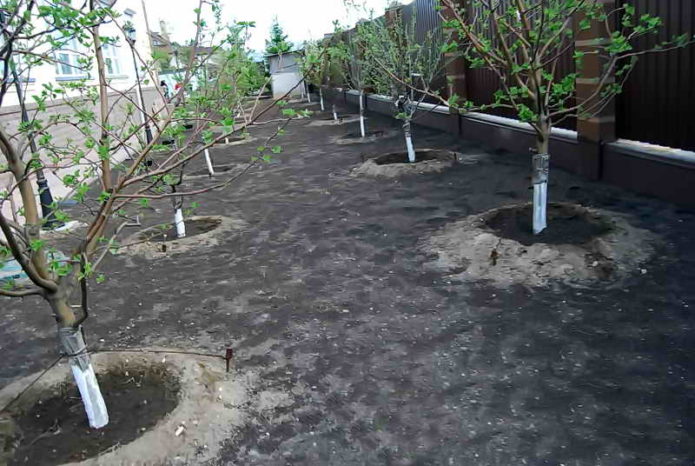
A well-groomed tree trunk circle is not only aesthetics, first of all it is a guarantee of tree health
Preparing for winter
Surprisingly, cherry is considered one of the frost-resistant crops - the tree is able to withstand frosts at -40 ° C. But temperature drops can lead to cracking of the bark. Therefore, cherries need to be covered in winter, especially for young trees.
Sequence of autumn works:
- removal of root shoots that have grown over the summer;
- foliage cleaning and digging of the trunk circle with fertilization;
- pre-winter watering, if necessary;
- removal of diseased, dry or broken branches;
- treatment for diseases and pests.
The near-trunk circle must be mulched with a 10-centimeter. If there is no suitable material for insulation, such as peat, you can cover this area with plain earth. Regardless of whether you are mulching with peat, humus or soil, try to avoid mulch touching the trunk of the cherry. This leads to bark podpolat and peeling.
If the winter is snowy, then a high snowdrift collected in the root zone will be an excellent natural protection from frost.
Be sure to wrap the trunks of young trees with any material that does not interfere with the penetration of air to the bark. For insulation, burlap, thick paper, non-woven material, old nylon tights, etc. are suitable.
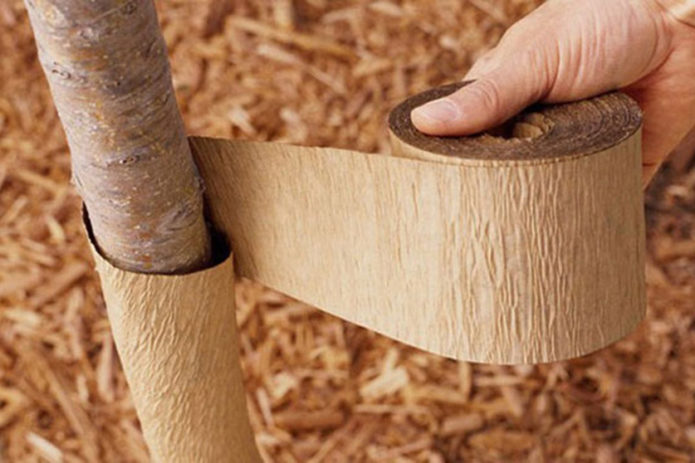
Mulching the trunk circle and wrapping the trunk with breathable material - a must for cherries in regions with cold climates
Features of cherry care in different regions
The main stages of care - watering and feeding do not differ, in whatever region the cherry is grown. But the rest of the techniques - planting dates, preparation for winter, are different.
- In Crimea, Central Russia and the Tver Region, cherry agrotechnology is no different from that described above. Nuances can arise in the frequency of watering. For example, in the Crimea and Krasnodar Territory, summer is hotter, and precipitation does not indulge, in contrast to the Central lane. Therefore, the amount of watering in hot regions may increase.
- Cherry cultivation is somewhat different in Siberia and the Urals. This primarily refers to the timing of planting. It is held in the spring around mid-April.The main condition is a well-heated soil. And of course, you need to choose only zoned varieties with high frost resistance. Pruning and shaping the crown is done in a slightly different way. In cold regions, it is preferable to grow short trees, so the growth of cherries is limited to a height of 1.5 - 2 m. Shelter in winter is mandatory, especially for young trees.
Cherry care in Siberia - video
Cherry propagation
Cherries are propagated in several ways.
By bone
This method is rarely practiced for growing a fruit tree. The seed method is mainly used for growing stock. Given the poor germination of seeds, they sow 10 times more than necessary.
- The seeds are collected only from well-ripened fruits.
- Seed material is freed from pulp, washed in a weak solution of potassium permanganate and dried under natural conditions.
- Before stratification, the bones are soaked in water for several days, periodically changing it.
- Then the prepared material is sown in containers with wet sand or a mixture of sand and fertile soil. Keep in the garden, preferably in the shade, until autumn.
- In October, the seeds are planted at a distance of 20 cm from each other, deepening 3 cm into the soil.
If there are no conditions for natural stratification, then the procedure can be carried out by placing a container with bones in the refrigerator on the lower shelf.
In the spring, gatherings appear. With sufficient care for the growing season, seedlings can grow to a height of one meter. In the process of growth, they are thinned out, leaving the most developed ones. Leave for the winter outdoors in order to identify the most frost-resistant seedlings. The next spring, the most resistant plants are selected and transplanted to a permanent place. A scion grown in this way can be grafted with any cherry variety you like.
If you leave such a cherry unvaccinated, then at 5-6 years it can begin to bear fruit. But the varietal qualities of the mother plant will not be transferred to such a cherry.
Shank
This method is convenient and therefore considered the most common. Cherries grown in this way retain all varietal qualities. Cuttings from young trees are best rooted - 3-5 years. It is better not to use cuttings from 10-year-old cherries, the percentage of their rooting is very low.
- Cuttings are harvested during the period of increased shoot growth - in mid-June.
- The shoot chosen for the cutting is cut off with a sharp knife or pruner. The cut should be straight.
- The apex is removed; it is not suitable for use. The remaining shoot is cut into cuttings 10 - 15 cm long, with at least 6 - 8 leaves on each blank.
- The top of the cutting is cut in a straight line at a distance of 1 cm from the growth of the upper leaves. To increase the area of the lower part, the cut is made obliquely. 1 or 2 pairs of lower leaves are cut off so that they do not interfere with planting.
- For rooting cuttings, an ordinary planting box is used, filled with a disinfected soil mixture of peat and coarse sand in a 1: 1 ratio.
- The cuttings are planted at a distance of 6 - 8 cm from each other, buried in the ground by 3 - 4 cm. The soil is slightly compacted.
- After that, cover the container with a plastic bag to create greenhouse conditions inside. For convenience, wire arcs are installed under the bag.
- The greenhouse is placed in a well-lit place, but inaccessible to direct sunlight.
It is easy to care for the cuttings. It is enough to keep the soil moist (but not waterlogged) and ventilate the shelter to reduce high humidity. Rooted cuttings are hardened before planting in the ground. To do this, remove the package for a while, gradually increasing it. Cuttings overwinter in a buried state under a layer of spruce branches. And in the spring they move to a permanent place.
How to root green cuttings correctly - video
Root shoots
Cherry gives a lot of root growth, with which it is easy to propagate your favorite variety. Therefore, propagation using root cuttings and root shoots is another easy and affordable way to get a new plant. Moreover, a rooted cherry will have all the characteristics of the variety.... Therefore, try to choose varieties with good yields, tasty fruits and other positive characteristics. The main advantage of this method is the ability to restore a favorite variety that died for various reasons. But there is also a drawback - a tree grown in this way will not enter the fruiting period soon.
- Reproduction by root shoots begins in the fall.
- Using a sharpened shovel, separate the offspring that you like, located at a distance of 1 or 1.5 from the mother plant.
- Leave it to winter in place.
- In the spring, dig up and transplant to a permanent location.
- If the roots of the plant are not sufficiently developed, plant it for growing in a school.
Root cutting
Propagation using root cuttings uses the same varieties as for harvesting shoots.
- Harvesting is carried out in early spring, until the buds have blossomed.
- At a distance of 1 m from the selected variety, excavate the roots located in the upper layers of the soil. Work carefully so as not to damage the suction roots.
- The root, with which you can work, must have a thickness of 0.5 to 1.5 cm. A prerequisite is the presence of a bud on it, from which the future shoot will develop.
- Cuttings 10-15 cm long are cut from the root.
- The harvested cuttings are planted on a pre-prepared bed with a soil mixture of fertile soil and coarse sand in equal parts.
- After planting, the garden is watered and mulched so that the moisture does not evaporate very quickly.
- Cover with a transparent film on top.
By maintaining moderately moist soil, the cuttings will take root by summer. In June and July, they are fed with a urea solution. By autumn, a shoot is formed from the bud. If there are several of them, then you have to leave the strongest one. The overwintered plant is transplanted to a permanent place in the spring.
Reproduction by grafting
To complete this procedure, you need to have some skills, so the method can be called complex. Most often they resort to it when there are few cuttings of the variety you like - 1 or 2 (it is possible that a neighbor shared the cuttings with you).
Inoculation into cleavage is carried out in the spring, at the beginning of the processes of the movement of juices, that is, in late April or early May. But the cuttings that will serve for the scion are harvested in the fall. They are stored in the basement, dug into wet sawdust or sand. Before starting the procedure, you need to update. Freshly cut cuttings are used only for summer grafting.
- Choose a branch for the rootstock about 5 cm thick.
- Make a straight cut and clean the cut with a sharp knife.
- Use a thick-bladed knife or small hatchet to split the middle of the cut. Splitting depth up to 10 cm.
- Make 2 cuts on the underside of the cutting to make a wedge. The slice length should be the same as the split.
- Insert the cutting into the split so that the cambial layers of the scion and rootstock match.
- Wrap the upper part of the stock with special tape or tape.
- Cover the cut and the grafting site with a layer of garden varnish. Put on a transparent bag to maintain the desired moisture level at the vaccination site.
- After a couple of weeks, the vaccine should take root, then the bag can be removed. The tape does not need to be removed until the scion and rootstock are completely fused.
Budding, or the method of inoculation by the kidney
This method is the most time consuming process. The procedure is best done in mid-June.
The rootstock trunk is thoroughly cleaned of dirt and dust and a T-shaped cut is made to the wood itself. A bud, ready for growth, is cut from the cutting along with a piece of bark. A kidney is carefully inserted into the incision, the vaccination site is wrapped with a special tape.
Diseases and pests
The cherry orchard is a tasty morsel for a variety of pests that activate in spring. And if harmful insects appear, then the cherry can become defenseless against fungal diseases. To prevent this from happening, it is necessary to carry out preventive treatment against diseases and pests. In large farms, chemistry is often used, which is highly undesirable in a private garden with a modest size. Therefore, try to detect the problem in time in order to use biological products that are safe for humans and animals.
- The most common diseases among cherry varieties are moniliosis, coccomycosis and clasterosporiosis. Fitosporin, Planzir, Baktofit, Trichodermin or Hetomin will be a good prevention of these fungal diseases. Each drug is supplied with detailed instructions explaining when to use and what rates to use. It is also useful to carry out the autumn processing of the crown and soil with 1% Bordeaux liquid and 2% copper sulfate.
- Shoot moth, spider mite, cherry fly and cherry weevil are the most dangerous pests for the culture. At the very beginning of the growing season against this group of pests, it is advisable to use bioinsecticides - Akarin, Bitoxibicillin, Fitoverm, Bicol, Boverin. All preparations are also provided with detailed instructions for use.
In addition to these troubles, birds also encroach on the harvest. But since birds are beneficial, you should not use radical methods of dealing with them. You can scare off birds using simple methods, for example, hanging old CDs among the branches or throwing a net on a low cherry tree.
Various varieties of cherries will help you determine not only your taste preferences. You can find a variety that is not susceptible to certain diseases. Well, then, as they say, it's a matter of technology. It all depends only on your desire to taste the juicy fruits from the wonderful tree. Planting a seedling is only half the battle. You still need to look after him. Fortunately, caring for cherries is not difficult. Rather, it can be compared to outdoor meditation. It is good for both the soul and the body.
